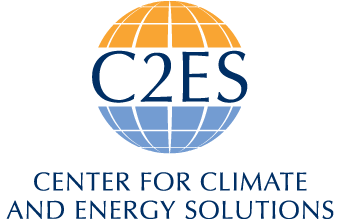The United States could lose a crucial economic asset under a recent proposal from the Environmental Protection Agency to rollback requirements for reporting greenhouse gases, just as transparent and credible data is increasingly essential for business. Weakening the Greenhouse Gas Reporting Program (GHGRP) would erode the transparency that gives U.S. producers their competitive edge, fragment reporting systems, and drive up costs for businesses.
In comments submitted by C2ES, we urge the agency to maintain the GHGRP in its current form and explain the harmful impacts of a full repeal.
What is the Greenhouse Gas Reporting Program and what is EPA proposing?
Established by EPA in 2009, the GHGRP requires large facilities emitting a certain threshold of carbon dioxide equivalent to report their emissions annually. Fuel suppliers, industrial gas producers, and facilities injecting carbon dioxide underground are also covered. Together, these sources cover roughly 85–90 percent of total U.S. emissions. Through its verification process and public data, the GHGRP offers credible, comparable, and transparent facility-level data used by companies, investors, researchers, and regulators.
EPA’s proposal would end reporting requirements for almost all of these sources. The only exceptions are petroleum and natural gas systems, for which EPA proposes to suspend reporting until 2034.
EPA argues that the rollback of the GHGRP would save industry about $303 million annually, but in practice, the change would be costly, limiting market access, increasing reporting burdens, and creating regulatory uncertainty.
The Cost of Losing Credibility
In global markets, verifiable emissions data is increasingly a prerequisite for trade. The European Union’s Carbon Border Adjustment Mechanism (CBAM) is a prime example. It will require importers to purchase certificates based on the verified emissions embedded in the products they buy, meaning exporters must supply credible data to their customers. Without government-certified GHGRP data, U.S. exporters would have to rely on less credible, costly third-party verification or EU-determined default values that could erase their competitive advantage.
U.S. manufacturers typically produce goods more efficiently than other countries, which would reduce costs under a policy like the EU’s. But without a trusted national dataset, that advantage, from the lower costs to the economic prosperity it should deliver, could vanish at the border.
And this concern is not limited to the EU. Countries including the United Kingdom, Norway, and Taiwan are already moving toward similar measures. Given this context, the requirements to collect, calculate, and verify embedded emissions will still exist and U.S. companies would be left to navigate multiple foreign policies alone, likely at higher costs with less credibility, eroding American businesses’ competitive advantage.
Regulatory Patchwork
These international challenges are only part of the cost. Domestically, losing the GHGRP would increase both financial and administrative burdens as states move to fill the gap. The program’s standardized methodology and data collection enables companies to comply more efficiently with state regulations, reducing both costs and complexity. Without this federal framework, states that rely on GHGRP data, such as Washington, Oregon, Colorado, and Massachusetts, would be forced to redesign their systems.
Additionally, without a federal program, more states are likely to create their own reporting programs leading to a patchwork of requirements. Companies have warned that could mean duplicative filings, additional audits, and retraining staff across multiple methodologies, all while losing access to the common data and standards that make reporting under the GHGRP consistent and efficient.
Rather than simplifying compliance, the proposal would multiply it, raising costs for companies operating across multiple jurisdictions. EPA’s projected $303 million in annual savings fails to account for these on-going, and potentially expanding, state-level compliance requirements. As the patchwork grows without a common federal program and new international policies emerge, those purported savings are not only overstated, they risk becoming a net cost to U.S. companies.
Strategic Value of Data
Beyond compliance concerns, GHGRP data underpins critical business and investment decisions. Companies use it to maintain supply chain transparency, meet investor disclosure expectations, benchmark efficiency, and plan long-term strategies. It also supports eligibility for strategic clean energy tax incentives, including sections 45Q for carbon sequestration, 45V for hydrogen, and 45Z for clean fuel production. Weakening or pausing the program could result in billions of dollars in foregone tax credits, undermining projects that have already secured financing and jeopardizing others still in development, injecting uncertainty into future investments critical to companies’ long-term strategies.
Conclusion
The GHGRP has always been more than an environmental tool; it’s an economic asset. It gives U.S. companies the credible data they need to operate efficiently, demonstrate leadership, and compete globally. Eliminating it wouldn’t erase reporting obligations; it would make them more fragmented, more expensive, and far less credible.
